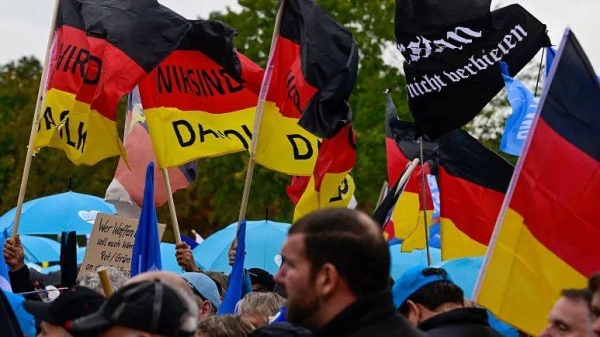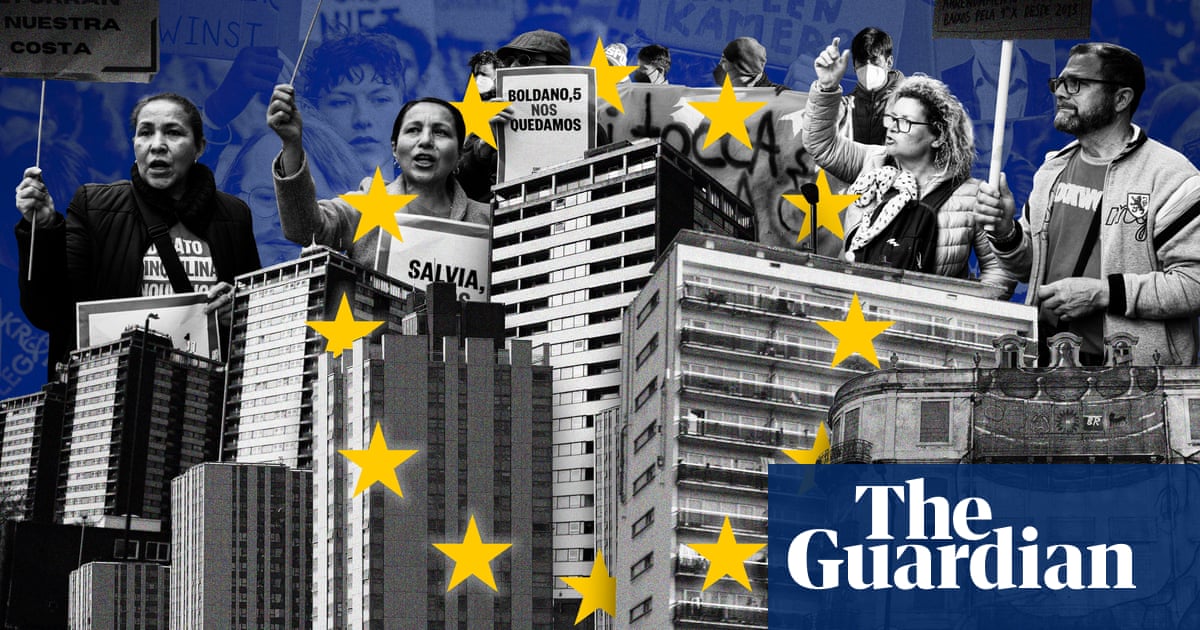
It was conceived as an “essay in civilisation”, but some have argued that Harlow has on occasion fallen short of this lofty ambition. Now a new analysis heralds fresh woe for the Essex new town – designed in 1947 – by labelling it one of the places in England and Wales most “at risk” from the fallout of the pandemic, which could spill over into support for rightwing extremism.
Of 336 councils, researchers identified 52 – including Harlow – where Covid is believed to have caused community tension and could inspire far-right activity. A report out on Monday from the Hope not Hate charitable trust says each of the places suffered a significant downturn in the pandemic, has a history of slow recovery from economic shocks and displays “less liberal than average” attitudes to migration and multiculturalism.
Hope not Hate researcher Chris Clarke said: “This doesn’t mean these places will automatically be susceptible to far right overtures, but the risk may have increased. Economic hardship can fuel community tensions, and these may be articulated through the election of far-right politicians, spikes in hate crime or one-off flash points spiralling out of control.”
Although the 52 authorities include some “left behind” towns, others are well connected, such as Newark in Nottinghamshire, or rely on an international transport hub, such as Luton. Others are seaside resorts such as Great Yarmouth in Norfolk or beauty spots such as Eden on the edge of the Lake District. The only Welsh place on the list was Anglesey.
Of the 52 authorities, researchers felt 16 were most vulnerable to rising community tensions and possible far-right support, partly because they have had high rates of unemployment and benefit claims since the start of pandemic.
They are Liverpool and the Lancashire towns of Blackpool, Bolton, Burnley and Rochdale, plus the council of Pendle, and, on the east coast, Middlesbrough. In the Midlands, Walsall, Wolverhampton and Sandwell were cited and, further south, Peterborough. In the south-east, Luton, east London’s Barking and Dagenham, Thurrock in Essex, Swale and Thanet in Kent as well as Harlow.
Last week, the mood in Harlow, first described as an essay in civilisation by the former head of the New Towns Commission Lord Reith, was mixed. Walking in Britain’s first pedestrianised shopping precinct, dentist Iffath Ahmed said she had encountered no racism here. “Everybody’s been very friendly. There’s been absolutely no problem,” said the 27-year-old, who commutes from multicultural east London. However, she said the impact of the pandemic was clear: “A lot of people are struggling: some can no longer afford dental work.”
Peter Cox, enthusiastically cleaning the windows of a Polish grocery, said social cohesion had been threatened by the conversion of a 14-storey office block, Terminus House, into 200 homes, and the influx of outsiders had disrupted the fabric of the local area and bred antipathy. Five years have elapsed since the killing of Polish immigrant Arkadiusz Jóźwik in Harlow fuelled a debate on xenophobia. Although the trial found no xenophobic motive, Cox says tensions are running high.
Broader analysis of the 52 “at risk” councils found they contained 144 towns which, on average, were larger than the typical town in England and Wales – with an average population of 47,000 compared to 38,000 nationally.
Last week’s budget signalled a reversal of some of the Conservatives’ austerity measures, their impact remains grave. The report said: “There was a strong sense in the 52 ‘at risk’ areas that austerity had never really ‘ended’ and that another wave of cuts would leave councils with little or no capacity to strengthen trust and build community relations.”
“Not many people will go around here at night any more,” Cox said, describing how in 1975 when he started working in the precinct, Harlow felt vibrant. “It’s like an entirely different place now.”
The Hope not Hate report says that despite being born of postwar Labour idealism, Harlow suffers from “fewer heritage assets – cheaper housing and an absence of assets conferring status – city status, football club, medieval history.” Perceptions of community cohesion fell during the pandemic, it added, particularly among the most deprived communities with misinformation antagonising inter-ethnic divisions.
One council official said they had witnessed an “increase in far right activity and homophobia, transphobia and conspiracy theory activity locally.” Another described how the name of infamous conspiracy theorist David Icke was graffitied on fences with others describing how anti-vaccination theorists had become more vocal.
Harlow town council rejects the claim it is at risk of extremism. Deputy leader Joel Charles said: “The council has always been determined to work with community groups to confront all forms of intolerance through the Safer Harlow Partnership. One of its priorities is to address hate crime.” He added that a new community resilience strategy had been developed to deliver recovery from the pandemic.He said: “The council is not complacent about the challenge of promoting social cohesion, so it continues to forge new partnerships with emerging community groups to help promote diversity and is keen to look at new ways to celebrate their contribution in the town.
“Work continues, in partnership with the community, to ensure that Harlow remains a tolerant and welcoming place that is free from extremism.”
This article was amended on 31 October 2021. In an earlier version, a locator map misspelled Middlesbrough as “Middlesborough”.












